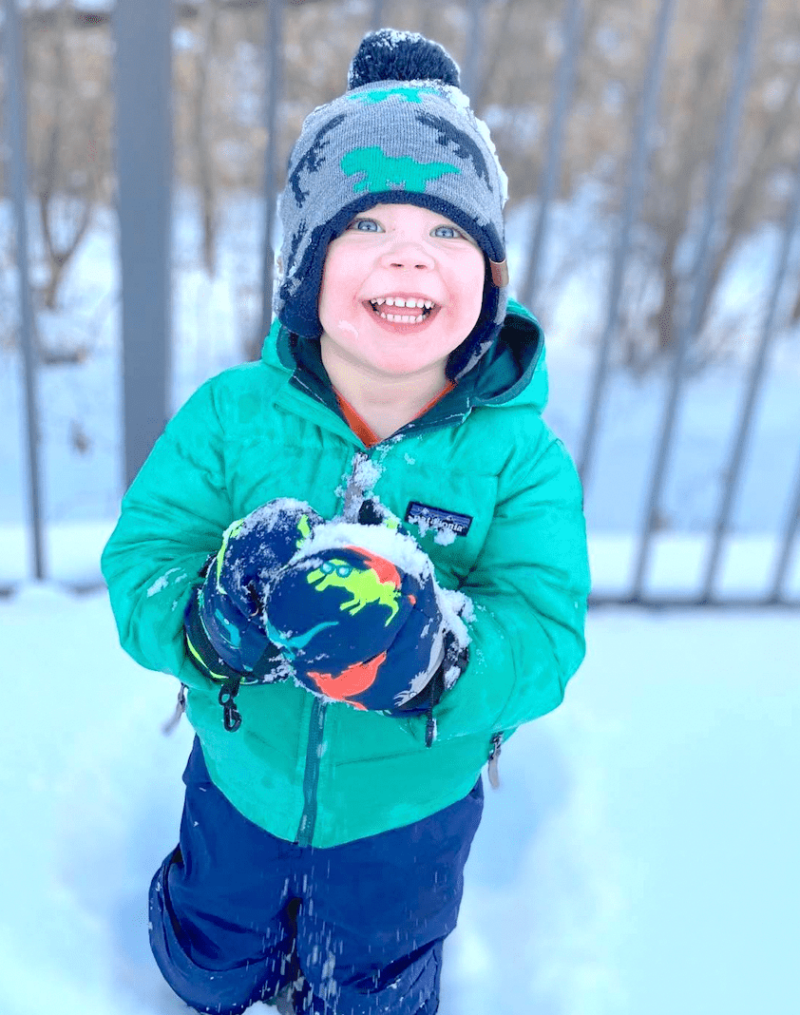
Weather changes are inherently fascinating to young children and there are many creative ways to explain the seasons or weather patterns. There are so many nursery rhymes, songs, and stories for children that center around the concept of weather. We tell children that “April showers bring May flowers” and we may sing “Rain, rain, go away” with them. Ezra Jack Keat’s The Snowy Day is a storybook that explores one child’s adventures in a snowy landscape.
As they learn more about ecology and ecosystems, weather-based activities may appeal to your preschooler. We’ve collected a few ideas to encourage their natural curiosity about weather changes.
1. Make checking the weather a family ritual.
Knowing the weather is an essential part of your daily ritual to help you wear comfortable clothing for the day. Why not make checking the weather fun by having your child ask your smart speaker to review the daily and weekly weather outlook? A quick glance at a radar app on your phone can also help your child visualize any precipitation that may be arriving soon. Checking the weather the day before could give your child a chance to pick out clothes, footwear, and outdoor gear to wear to their classroom the next day.
2. Buy a thermometer, a wind sock, and a rain gauge.
These simple meteorological tools can provide hours of fascination for young children. As the seasons change, your preschooler can watch the red temperature gauge fall and rise. When fall or spring winds kick up, a wind sock provides a visual depiction of the rate and intensity of local winds.
Rain gauges can introduce S.T.E.A.M. concepts to young children by helping to quantify a meteorological event. Introduce your child to the idea of making a hypothesis by having them predict how much rain will fall. If you have several children, mark their predictions using different-colored painter’s tape. After the storm has passed, see who was the closest! Your whole family may be surprised by how many inches of rain fell before soaking into the earth to water the plants.
3. Point out unique weather events.
Every region has unique weather patterns and events that your family can observe. In autumn, changing leaves provide visual evidence of dropping temperatures. As winter approaches, take a woodland walk to look for frost flowers, or simply head out early to view delicate frost crystals on the ground. Viewing sunsets or sunrises over time can help children understand that days are lengthening or growing shorter as the seasons change.
Stronger weather events like thunderstorms or snowstorms can be safely viewed from inside a home, and beautiful cloud formations show how water vapor can take many different forms. As you witness these events, take a few moments to describe the science behind the events. Even a simple and short explanation can spark a child’s curiosity.
4. Try your hand at weather forecasting.
This idea involves a little playacting, which most children love. Grab a dress-up outfit and become your local weather person! You can put a weather map up on the television and your local news person can walk you through the outlook for the week. Will storms cancel sports activities? Will we have to shovel the driveway or porch? There’s only one way to know: ask your preschooler for the latest in all weather-related news!
The Gardner School Prioritizes Preschool Science Education
Encouraging your child’s curiosity about the natural world will prepare them for the scientific learning they’ll encounter in the future. Whether your child loves making a mess in the kitchen, collecting a bevy of plants, identifying animals, or bouncing different types of balls, all these actions are precursors to scientific inquiry. You can also support your child’s curiosity by enrolling them in The Gardner School, an academic preschool with a focus on S.T.E.A.M (Science, Technology, Engineering, Art and Math) learning. Contact us today to schedule a tour and learn more about what we can bring to your child’s educational journey.
